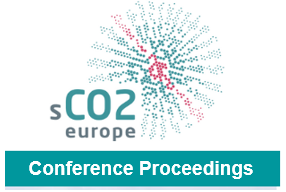Experimental investigations on the heat transfer characteristics of supercritical CO2 in heated horizontal pipes
In the frame of the sCO2-QA (qualification of analysis tools for the evaluation of a residual heat-driven, self-sufficient system for decay heat removal) project, a residual heat-driven self-sufficient sCO2-operated decay heat removal system based on a Brayton cycle is simulated with the German thermal-hydraulics system code ATHLET (analysis of thermal-hydraulics of leaks and transients). The heat removal system consists of a compact heat exchanger in the containment, a turbo-compressor system located in the reactor building and a gas cooler in the outdoor area. The validation of ATHLET and other numerical codes as well as understanding the heat transfer characteristics of sCO2 near the critical point requires experimental data. At IKE (Institute of Nuclear Technology and Energy Systems), the SCARLETT (supercritical carbon dioxide loop at IKE Stuttgart) test facility is available for various experiments with sCO2.
This publication includes an experimental investigation of the thermal stratification in heated horizontal sCO2 pipe flows. For this investigation, eight test series with overall 48 experiments were carried out in two pipes with inner diameters of 4 mm and 8 mm. The experiments were carried out at a pressure of approximately 7.75 MPa. The target values of mass flux were set at 400 kg/m2s and 800 kg/m2s and those of heat flux at 50, 90 and 130 kW/m2, resulting in a heat to mass flux ratio of 62.5-225 J/kg. The inlet Reynolds numbers are between 16000 and 120000. The measured parameters are the flow rate, the pressure, the inlet and outlet fluid temperature as well as the outer surface temperature along the test pipe in three different radial angles.
The results show the influence of the pipe diameter, Reynolds number, mass and heat flux on the temperature stratification. Also, inflow lengths were determined for a fully developed temperature stratification. This data set can be used for the validation of computer codes.
Vorschau

Zitieren
Rechte
Nutzung und Vervielfältigung:
Dieses Werk kann unter einer Creative Commons Namensnennung 4.0 Lizenz (CC BY 4.0)
Creative Commons Namensnennung 4.0 Lizenz (CC BY 4.0)
genutzt werden.
